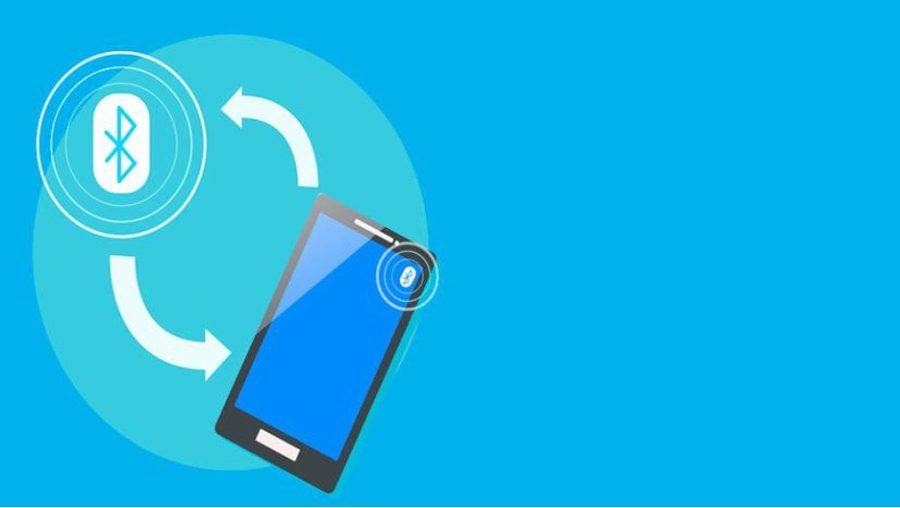What Makes Bluetooth Beacon So Interesting?
To understand a Bluetooth beacon, you must first know the difference between standard Bluetooth and Bluetooth Low Energy. Traditional Bluetooth is good for Bluetooth headphones and speakers because it utilizes a lot of power and can communicate over long distances.
On the other hand, Bluetooth Low Energy transmits less data over a shorter distance and consumes significantly less power. BLE beacons transmit little bits of data at regular intervals.
Bluetooth Beacons In Operation:
To understand how beacons work, consider the example of a coffee shop.
- Suppose that Bluetooth beacons are put at the entrance to a coffee shop.
- Within their range, these Bluetooth beacons send out signals. The range of a beacon is 20 to 300 meters.
- Phones that are within the beacon range show that they are nearby.
- The smartphone then sends the ID number of the signal to the cloud server.
- The server returns the action linked with the beacon ID. It might be a note promoting a new cafe appetizer, combo bargains, a coffee-making movie, or a survey!
- As a result of these messages, customers are driven to a webpage, an application, a mobile number, or whatever action you want them to take.
What Kind Of Data Does A Bluetooth Beacon Send?
Beacons are used to send data packets. The components of these packets vary slightly from iBeacons to Eddy stone. They usually simply have an ID holding their spatial data, a component indicating the state of the beacon, and a URL pointing to data on a nearby server.
What Happens When A User Interacts With A Beacon?
When a beacon is allocated to a campaign, it broadcasts the information to Bluetooth-enabled cell phones in the area. Android phones can receive campaigns instantly thanks to NearBee, which analyses these signals and displays the appropriate campaign. You’ll need a beacon-powered app or a separate third-party app, like Nearbee to perform the same on an iPhone.
Depending on what you want to broadcast, the user can get a markdown card, forms, or a custom URL. It will first appear as a notification on the user’s lock screen. After clicking this message which comes across the screen, the user will be sent to the campaign.
Will All Beacons Work With My App?
Beacons are largely interchangeable because they all send data in the same format. Since certain features of the broadcast are unique to each manufacturer, the program must be adjusted for that beacon. For the app to respond as planned, it has to know what beacon it’s listening to, and each manufacturer will have a set of tools to help with this.
Bluetooth Beacon Tracking in Action
A Bluetooth beacon can send basic data to an app, which can use that data to establish a user’s location by connecting with many beacons. Without the aid of an app interface, beacons are unable to perform this calculation.
Using many beacons to estimate a user’s location in an interior setting, on the other hand, isn’t always effective for a variety of reasons. While a set of beacons might be able to find a user at any given time, they’d have trouble dealing with a moving device if they couldn’t figure out which way the user was facing. To bridge this gap and enable precise interior navigation and localization, several websites employ a range of unique technological computations.
Bluetooth Beacons in Use:
Bluetooth Low Energy (BLE) beacons are the most used indoor positioning technology. Unless you’re Mapsted, the world’s first hardware-free indoor positioning service, interior location technology will rely heavily on the deployment of unreliable Bluetooth beacons.
In an indoor venue, BLE beacons are commonly mounted on walls or other physical objects. Beacons, as previously indicated, emit wireless signals that can be received by BLE receivers (such as cellphones).
Current smartphones support the Bluetooth 4.0 protocol. When smartphones adopt the Bluetooth 5.1 protocol in the future, they will be able to make use of a new direction-finding capability that can also measure the beacon’s orientation, greatly enhancing positioning accuracy.
The metadata in BLE signals is analyzed and used to identify the user’s position. iBeacon and Eddystone are two BLE communication methods.
- iBeacon Metadata:
MAC address (each beacon’s unique ID – only compatible with Android)
RSS (received signal strength)
UUID for proximity (identifier for a set of beacons)
Major (checks areas, e.g., floor number)
Minor (define more precise locations, such as a particular sector of the Major’s floor)
- Eddystone Metadata:
MAC address (each beacon’s unique ID – only compatible with Android)
RSS (received signal strength)
UUID for Eddystone
URL for Eddystone (a URL, if necessary)
TLM Eddystone (present status of the beacon)
The RSS gives a rough estimate of the device’s distance. A strong RSS implies that the individual is close to the Wi-Fi router, whereas a weak RSS indicates that the user is far away from the Wi-Fi modem.
Several approaches can get used to locate BLE beacons:
- BLE Proximity beacons
- BLE Fingerprinting
- BLE Trilateration
BLE proximity determines a rougher user position depending on which BLE is available at the time. Based on the ranges between the consumer and the router, BLE trilateration determines the position of each visible Wi-Fi router.
The location of Wi-Fi networks is not required for Bluetooth beacon fingerprinting. Instead, it creates a large fingerprint map of each beacon’s RSS in several locations and compares the computed RSS to the fingerprint map in real-time to determine the user’s location. A site survey is required to create a Wi-Fi fingerprint map, which takes time.
What Are The Impacts Of Beacons?
Although Bluetooth beacon uses the same frequency as some Wi-Fi signals and may cause interference, they operate at low power and broadcast messages for very short periods – often less than one millisecond.
As a result, even if a lot of people are using Bluetooth at the same time, it’s rare for it to interfere with a Wi-Fi connection – there are a lot of common household gadgets that use this frequency band with much higher power levels, yet they usually have no effect. If your Wi-Fi connection is based on 5GHz transmission, you will not suffer any interference.
Summing Up!
Lastly, there are no limits to what a Bluetooth beacon can do, and their inexpensive cost means that everyone, from small businesses to huge institutions like hospitals and airports, may benefit from investing in beacon technology. They don’t transmit any valuable data. Instead, they send short identifiers that the app should utilize to do something useful with the data. Beacons could theoretically provide push notifications without accessing the internet, but they would only be a few characters long. They are dummy objects that broadcast brief IDs, and the app is responsible for doing anything useful with them.
Share It on :





